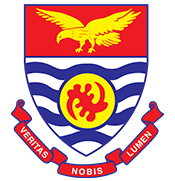The Yamoransa Model
This innovative approach to teaching and learning, community outreach and sustainable development was initiated by Prof Kofi Awusabo-Asare and the Department of Population and Health, and designed with the community in 2008.
The package consisted of (1) students from the Department spend 10-14 days living in the community just after the long vacation at Level 300; (2) assisting the community to identify its needs; (3) setting up structures for the implementation of community-identified projects. For the third component, the process involved five stages - Need, Design, Install, Learn and Sustain (NDILS) (www.yamoransamodel.org):
- Need (Visited proposed community-held user meetings; Learnt the context; Collected initial community and population characteristics; Took technical measurement of community resources and potential);
- Design (Designed programmes and projects based on context familiarisation and data collection; Iterated design, validation, discussion and approval of projects; and refined the design including funding for implementation);
- Install (Established various community committees with signposting for implementation of activities for completion and dedication; Detailed the technology, training and maintenance regimes for sustainability; and developed constitution to guide the activities of the groups);
- Learn (Discussed and established feedback framework for iteration with community; Implemented strategies for maintenance regimes in order to prolong life span to equipment; Writing of impact assessment report and related documentation for dissemination); and
- Sustain (Continue engagement within community and for technology maintenance regimes; Continuing impact assessment report and related documentation; and respond to what is learned by making appropriate changes).
The first batch of students was received in the community in 2010. With the support of the Department, the community established a Yamoransa Community Development Committee (YCDC), and six sub-committees: Health, Education, Sports, Environment, Gender and Youth.
The membership of the YCDC consists of representatives from various identified groups in the community (chiefs and elders, young people, women, artisans and professionals, religious leaders, the Assembly Member and other selected members of the community) and representatives from the Department of Population and Health.
This important Social Innovation, known as the Yamoransa Model, has become a tool for empowering communities to drive their development agenda. Projects are identified and implemented by the community, and funded by a combination of community, the Department and outside donor support.
From 2012, YCDC has received support from the Association of Yale Alumni (AYA), Yale Alumni Service Corps (YASC), and later, Helping Africa Foundation (HAF), an organisation founded by a philanthropist by name Dr. Deborah Rose.
With the help of these two organisations, a two-story educational centre has been built at Yamoransa with a Home Economics Centre and a Robotic Laboratory on the first floor and an ICT teaching laboratory and a community conference room on the second floor.
Technical support has been provided by TECHAiDE. The management of the programmes and projects in the community are organised by the executive board of YCDC. The Centre, known as Yamoransa Model Resource Centre (YMRC) has also become a training point for the teaching and learning of robotics, home economics (cooking and sewing) and ICT for both pupils and teachers of the Yamoramsa Circuit Education.
The Yamoransa Model has now been replicated across in 11 out of the 16 regions in the country and in The Gambia by HAF, TECHAiDE and partners.

